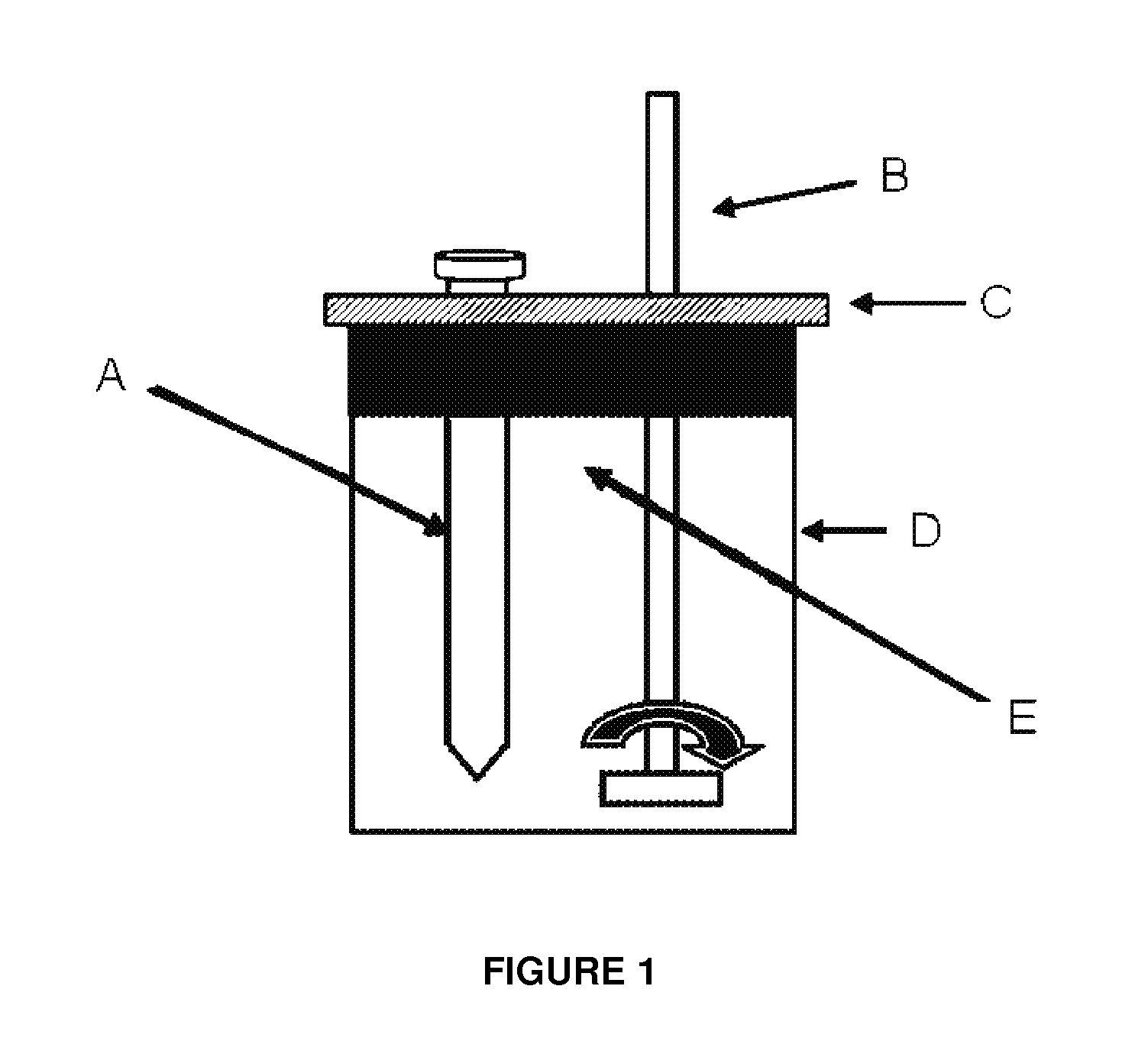Multifunctional composition base 1,3-oxazinan-6-ones with corrosion inhibition and heavy organic compounds inhibition and dispersants and obtaining process
a technology of heavy organic compounds and composition bases, which is applied in the direction of liquid carbonaceous fuels, fuel additives, fluid removal, etc., can solve the problems of daily losses of millions, corrosion is a phenomenon that generates millions of dollars in oil losses, and achieves the effect of controlling fouling
- Summary
- Abstract
- Description
- Claims
- Application Information
AI Technical Summary
Benefits of technology
Problems solved by technology
Method used
Image
Examples
example 1
[0059]Process for obtaining 3-(octadec-9-enyl)-1,3-oxazine-6-one (Product 1). In a flask ball three-necked 500 ml equipped with a magnetic stirrer, a dropping funnel, a thermometer and a condenser were added 50 g (0.187 mol) of oleylamine at a temperature of 40° C. with vigorous stirring was slowly added to 13.48 g (0.187 mol) acrylic acid. The reaction is exothermic and the temperature under these conditions rises gradually to 90° C. The reaction mixture was stirred under these conditions for 2 hours and then increased to 100° C., thus obtaining a very viscous pale yellow, then to a temperature of 30° C. were added 2.8 g (0.094 mol) of paraformaldehyde, and temperature was increased to 93° C. at a pressure of 465 mmHg to remove water of reaction and finally obtained 65 g of Product 1, the spectroscopic features are:
[0060]FTIR (cm−1): 3004.9, 2921.6, 2852.1, 1656.1, 1463.5, 1376.9, 1305.4, 1106.1, 956.9, 721.2. 1H NMR (CDCl3), 200 MHz, δ (ppm): 5.28, 3.91, 3.24, 2.84, 2.36, 1.94, 1....
example 2
[0061]Process for obtaining the 3-octadecyl-1,3-oxazine-6-one (Product 2). In a flask ball three-necked 500 ml equipped with a magnetic stirrer, a dropping funnel, a thermometer and a condenser were added 50 g of octadecylamine and at a temperature of 40° C. with vigorous stirring was slowly added to 13.4 g of acrylic acid. The reaction is exothermic and the temperature under these conditions rises gradually to 90° C. The reaction mixture was stirred under these conditions for 2 hours and then increased to 100° C., thus obtaining a very viscous pale yellow, then at a temperature of 30° C. were added 2.8 g of paraformaldehyde, and increase temperature at 93° C. at a pressure of 465 mmHg to remove water of reaction and finally obtained 64 g of Product 2, the spectroscopic features are:
[0062]FTIR (cm−1): 2922.1, 2852.1, 1655.3, 1461.5, 1375.8, 1302.6, 1105.7, 956.5, 721.3. 1H NMR (CDCl3), 200 MHz, δ (ppm): 3.93, 3.25, 2.86, 2.38, 1.20, 0.83. 13C NMR (CDCl3), 50 MHz, δ (ppm): 167.4, 68....
example 3
[0063]Process for obtaining the 3-tetradecyl-1,3-oxazine-6-one (Product 3). In a flask ball three-necked 500 ml equipped with a magnetic stirrer, a dropping funnel, a thermometer and a condenser were added 50 g of tetradecylamine and at a temperature of 40° C. with vigorous stirring was slowly added to 16.7 g of acrylic acid. The reaction is exothermic and the temperature under these conditions rises gradually to 90° C. The reaction mixture was stirred under these conditions for 2 hours and then increased to 100° C., thus obtaining a very viscous pale yellow, then to a temperature of 30° C. were added 3.5 g of paraformaldehyde, and increase temperature at 93° C. at a pressure of 465 mmHg to remove water of reaction and finally obtained 69 g of Product 3, the spectroscopic features are:
[0064]FTIR (cm−1): 2921.4, 2853.4, 1657.1, 1462.3, 1375.3, 1304.5, 1108.2, 955.8, 722.4. 1H NMR (CDCl3), 200 MHz, δ (ppm): 3.95, 3.21, 2.85, 2.33, 1.23, 0.86. 13C NMR (CDCl3), 50 MHz, δ (ppm): 167.1, 6...
PUM
| Property | Measurement | Unit |
|---|---|---|
| Temperature | aaaaa | aaaaa |
| Temperature | aaaaa | aaaaa |
| Temperature | aaaaa | aaaaa |
Abstract
Description
Claims
Application Information
 Login to View More
Login to View More - R&D
- Intellectual Property
- Life Sciences
- Materials
- Tech Scout
- Unparalleled Data Quality
- Higher Quality Content
- 60% Fewer Hallucinations
Browse by: Latest US Patents, China's latest patents, Technical Efficacy Thesaurus, Application Domain, Technology Topic, Popular Technical Reports.
© 2025 PatSnap. All rights reserved.Legal|Privacy policy|Modern Slavery Act Transparency Statement|Sitemap|About US| Contact US: help@patsnap.com



